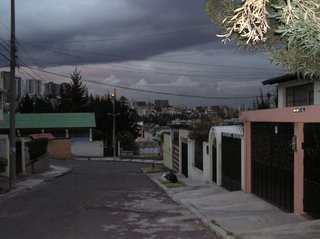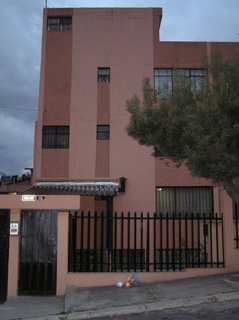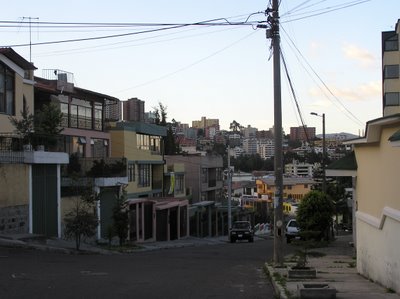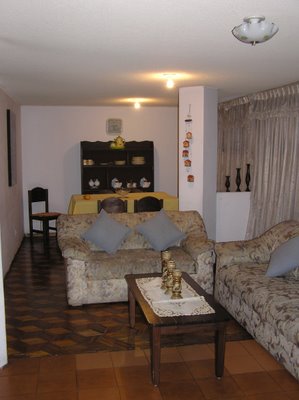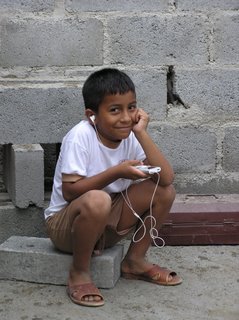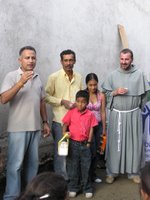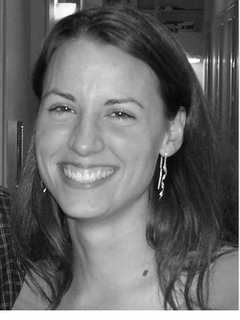Despite plans to leave the US on the 28th of August, I only arrived in Quito on September 7th! I had numerous problems in my quest to obtain a visa... and then at the final hour, I did not receive my passport back from the Ecuadorian Consulate.
According to all Ecuadorian Consulates in the US, visitors planning to be in the country for longer than 6 months (90 days as a tourist, plus one 90 day extension) must get some sort of non-tourist VISA. I tried to comply with this as my original plan was to be here for 10 months...
The Ecuadorian Consulate which services New Mexico residents is in Houston, Texas. I planned a trip to this consulate for about 2.5 weeks before my trip. (The consulate said I HAD TO appear in person, and that they were open every day, 9am-3pm).
Habitat for Humanity in Ecuador sent me a packet of documents after I requested them and I prepared by obtaining my certificate of health, police record (0), financial docs, etc. When I arrived in Houston, problems arose almost immediately. I called the consulate to see if there was a preferable time between 9 and 3 for me to appear. The office, however, was going to close early in celebration of the national day of independence, the next day. I was the last person permitted to enter the office that day and my buffer day, friday, was worthless due to the national holiday. The consulate reception, up until I left the office, was still not informing people that they would be closed the next day ¨we´re open every day, 9-3¨ they said... oh, you want to come tomorrow? we´re closed tomorrow¨
The second problem (after the holiday confusion) was that being the first volunteer to need a VISA with Habitat for Humanity (HFH) Ecuador, the office had never prepared the paperwork before. Signitures that needed to be originals were not, seals that needed to be present were not, letters which were supposed to be on letterhead were not. The consulate did not issue the VISA.
I tried to contact HFH Ecuador, along with the help of the US international office and the Latin American office, on Monday because I was still in Texas and was considering extending my stay if we could somehow produce the correct documents. The Consulate said if they could recieve word from the Ministry of Foreign Affairs in Quito that they had recieved the documents from HFH Ecuador, that they would issue the VISA. We couldn´t get back word from Quito, however, that this would be possible during the week and the international office recommended that I return to NM. I also was able to convince the consulate to let me request the VISA via mail, since they had already seen all of my documents and I had arrived in person. The Habitat office in Quito still only had to bring their documents, with original signatures, to the Ministry of Foriegn Affairs in Quito.
I returned home to Santa Fe and sent all the required documents via express mail (overnight and certified), with a return express mail pre-paid envelope. The Habitat office in Quito assured me and the international office that they would take the documents to the Ministry of Foreign affairs and have them contact the Houston Consulate. Apparently the documents were eventually taken to the Ministry... however, the ministry would not accept them and said they would requrie additional documents which the Habitat Ecuador office said they would not be able to prepare until after the 15th of September.
At this point I had requested that the Houston Consulate send my passport back to me! I wanted to at least make my flight and go for 6 months, or figure out a way to stay once I arrived in Quito. The Houston Consulate told me they were sending the passport on the Tuesday before the Monday I was scheduled to leave. They said they would send it that afternoon (in my pre-paid, express mail envelope). On Friday, I had not received the passport and I called to find out what had happened. They still had not sent it.... but said they would ¨ahorita¨, ¨right now.¨ It was before 3pm and express mail is guaranteed to arrive the next day if it is sent by 3pm (even on a Sunday). I thought it would arrive Saturday... until it did not show up as registered online. On Sunday when I had still not recieved the mail, I had to change my flight. I changed it sufficiently so that if the consulate had still not sent it, that I could ask friends or family in the Houston area to pick it up and send it themselves.
The passport finnally arrived on the Tuesday after my originally planned Monday flight. So... now I am here and ready to share my adventures. I may be in Ecuador for less time than originally planned, due to the lack of VISA... however there will still be plenty to convey.
I now find out that one of the reasons the Ecuador office did not seem to concerned about the possibility of not aquiring the VISA is that Valeria, which whom I will be working most closely, has various friends from other South American Countries, in particular Argentina, who leave and come back to Ecuador every 3 months and that they have now problems. I think this is likely a South American-specific phenomenon for three reasons 1. When I arrived in Quito and told the customs agent that I was going to be in the country for 3 months, she looked at me critically and checked each page of my passport and asked if I had ever been in the country before. I haven´t, so I told her no. After checking each page she stamped my passport. 2. When I visited the consulate in Houston there was a family thre getting the same VISAs which I was trying to obtain. This family told me that they would not be able to return to Ecuador for one year if they did not get their VISAs. 3. The only consistant information which I recieved from any of the consulates was that I COULD NOT obtain a visa while in the country (which remains to be seen, I seem to read information to the contrary in online unofficial sites) and that after 6 months it was required to have a VISA in order to not be given a large fine upon leaving the country.
A few other interesting facts about this adventure--- No one in the Houston Consulate spoke English... it was kindof funny, the first guy looked at my police report and said ¨que es esto¨ (what is this?) even though it is a document that they request and must recieve all sorts of versions every day! (maybe). Also, apparently no one in my volunteer program (which, granted is only about 1.5 years old) has actually obtained a VISA in ANY of the countries where it exists... however obtaining one was listed as one of the required expenses to participate. Everyone else has just been leaving and returning to their countries....


